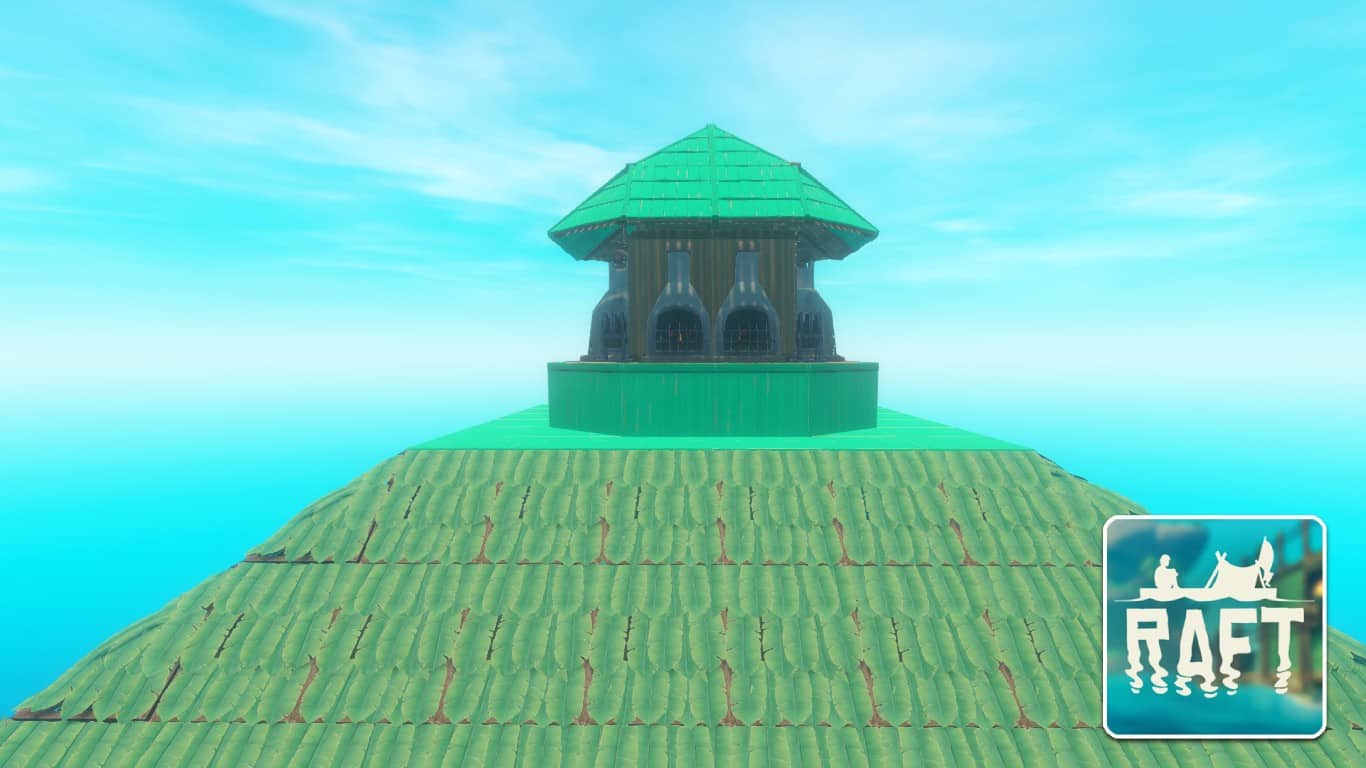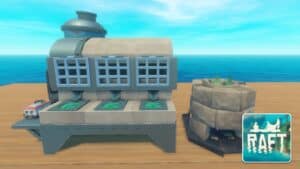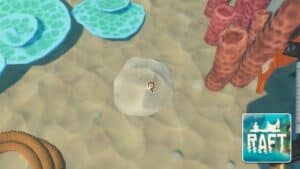Expanding your raft is crucial, as you need plenty of space to build high-end structures to navigate through the endless ocean in Raft.
However, since the materials required for each structure can be costly, especially in the early to mid-game, it’s best to plan carefully before you start building.
Recommended Read: What to Do After Utopia in Raft
This guide will show you how to properly build your raft in Raft, including tips and tricks to save resources and time, as well as some ideas and examples of building a raft.
Table of Contents
How to Build Your Raft
To start building and repairing in Raft, you need to craft a Building Hammer using 4 Planks and 2 Ropes.
Its recipe can be found in the Tool tab, indicated by a hammer and shovel icon.
Note: You can’t build a brand new raft but can only expand the 2×2 starter raft. If you somehow lost your starter raft, you have to either respawn or create a new world.
Build the First Floor
Once you have the Building Hammer, put it in your hotbar and hold the right mouse button to open the building panel.
In this panel, you can choose to build different structures, along with their variations, by holding your mouse over the corresponding icons.
The first thing you want to build is a Foundation.
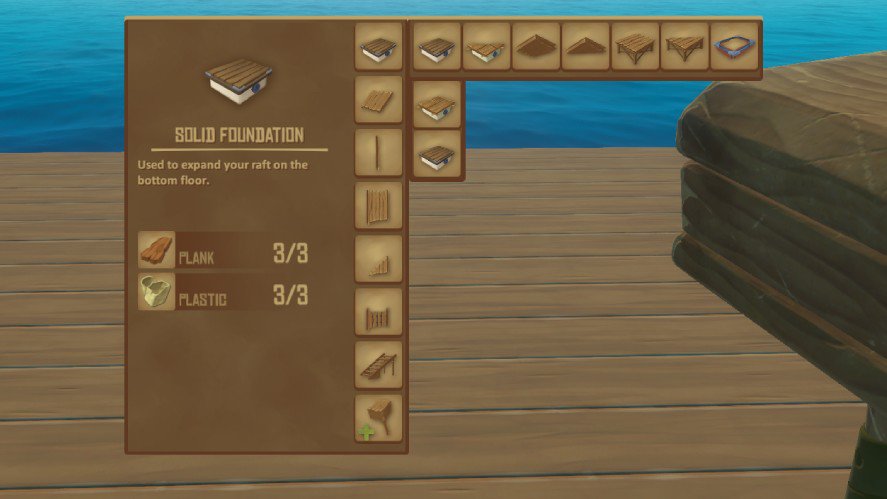
As its name implies, a Foundation is required to build almost all structures. It’s the only structure you can build on the ocean to make your raft float.
Since the Foundation is built at sea level, it is the only target for the shark.
When a Foundation is destroyed, whether by the shark or by the player with an Axe, all structures built on it will also be destroyed.
So, you need to learn how to stop shark attacks by fortifying your raft.
You must fortify all outer Foundations in order to completely stop shark attacks.
That leads to another problem: the cost of fortifying can be too high, as one fortified Foundation requires 1 Metal Ingot and 2 Nails.
Overall, you’ll want to have the smallest first floor possible because it reduces the cost of fortification and minimizes the effort of monitoring shark attacks when you cannot fortify your raft just yet.
However, having a too-small first floor makes it difficult to expand the second floor and build utility structures.
For example, you need a lot of space to build an Engine. The more Foundations your raft has, the more Engines you need to build.
Fortunately, Engines only count foundations, not Floors or Collection Nets, so you may only need one or two Engines if you’re going to build a small first floor.
Other helpful structures like the Electric Purifier or the Paint Mill also require an open space at sea level to work.
A 7×7 first floor is enough for constructing 2 Engines and other structures. You can also go for a 10×10 or 10×11 and still receive the maximum speed bonus from the two Engines.
Finally, remember to leave some spaces for Collection Nets. You can never have enough ocean trash in this game!
Build the Second Floor
For some players, the second floor only exists because it’s required for the Receiver and Antenna to work.
They tend to build everything on the first floor, from the kitchen, bathroom, animal pens, smelting, and recycling to the crop farming and purifying rooms!
However, if you follow our concept of making a small first floor or just want to separate the rooms, then here is what you should build on the second floor:
- Cooking and beverage: to cook delicious food and juice beverages.
- Animal pens: to catch and tame animals for their resources.
- Farm: to farm crops and honey.
- Industrial room: to smelt ores and recycle Trash Cubes.
- Raft control room: contains 1 Receiver, 3 Antenna, 1 Steering Wheel, and 1 Engine Control to control your raft.
We have a guide on how to build a second floor, so make sure to check that out first.
Important note: You should use Horizontal Pillars instead of Vertical Pillars when building the second floor, as they don’t take up any space on the first floor. This is extremely useful if you have a small raft.
Once you have a large area made of Wooden Floors on the second floor, it’s time to build Walls to create separate rooms.
You can make the wall as high as you’d like, but we recommend keeping it around 1.5 wall high for the best outcome.
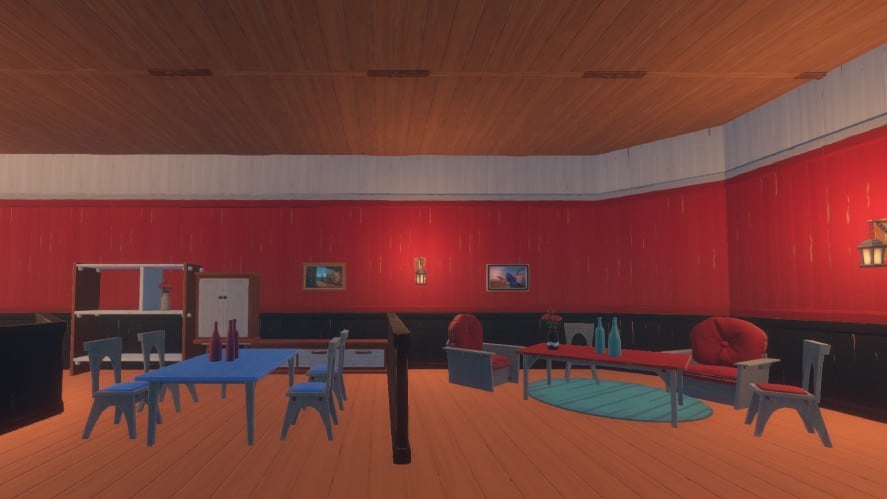
Build half a wall at the bottom first. Then, stack a full wall on top of it.
Building walls this way makes the wall look better when painting later on.
Note: You can build most structures, including walls and floors, in diagonal angles to create a natural shape for your raft.
To finish the second floor, cover each room with a roof of your liking or another floor if you’re planning to build a third floor.
Building more floors is optional.
If your main living area is on the second floor, then it’s recommended to have the raft control room on a higher floor so that you can have a better view.
There is a special structure that needs to be built at least 3 walls high for it to reach maximum efficiency – the Wind Turbine.
If you want to make one of those, you can either make the second floor or the first floor 2 walls high and put the Wind Turbine on top of the second floor, near the raft control room.
Paint the Raft and Use Decorative Items
Your raft is still just a blank wooden structure, regardless of what you choose to build in the previous two steps.
Learning how to paint in Raft can bring life to your raft!
By choosing a variant of colors and patterns, you can make each room unique and give it a look that matches its purpose.
For example, the Engine room on the first floor could have a darker color with fuel pipes and dim lights, whereas the living room could be more colorful with patterns on the walls.
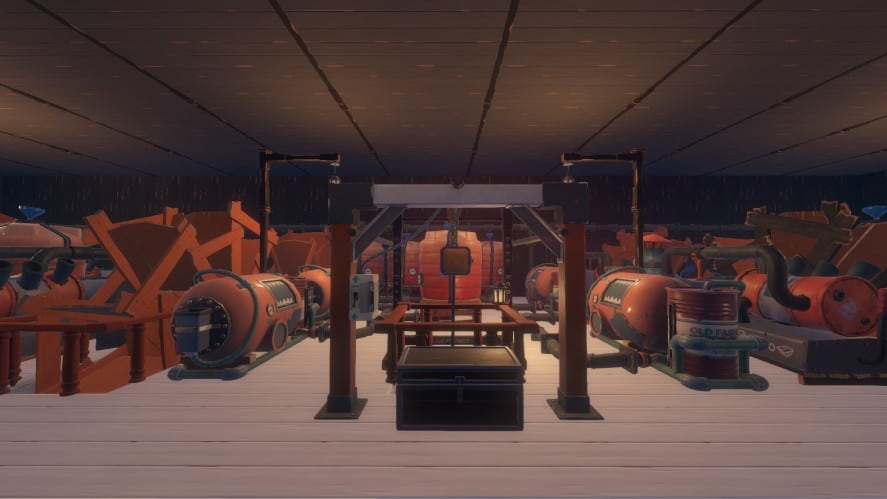
Remember the 1.5 wall height we mentioned earlier?
To make the wall look good, you can paint the first half of the wall the same color as the floor. Then, you can use whatever color you like for the top wall, but a brighter color than the bottom part usually works best.
Besides painting, decorative items also play a crucial part in bringing your raft to a whole new level.
Try using chairs, tables, lights, shelves, or even a piano to create the coziest place on the vast ocean.
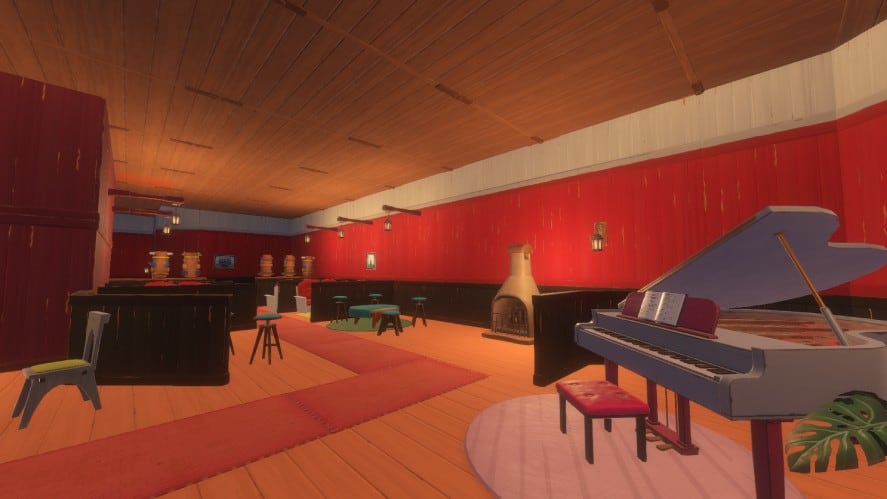
When it comes to functional rooms like the smelting room or storage room, it’s best just to build what you need instead of fully decorating it.
All in all, the choice is yours! A lovely flower pot in a storage room won’t hurt anyone.
Note: You can break any structure using an Axe and get 50% of the used materials back. A common mistake that most players do is build the cheap version of the structure first and then upgrade it to the better version. Doing so costs more materials because the game doesn’t upgrade the structure but instead breaks the current one, gives you resources back, and then builds the new structure as a replacement for the old one.
Best Way to Build Your Raft
There is no best way to build your raft, as the optimal build for you entirely depends on your goals and playstyle.
In the early game, we recommend expanding your raft to both sides to catch as much ocean trash as possible.
An increase of 12 to 15 Foundations on each side will guarantee you don’t miss any ocean trash (assuming you have enough Collection Nets).
Remember to cover the long line of Collection Nets with two lines of Foundations to prevent shark attacks. (image below)
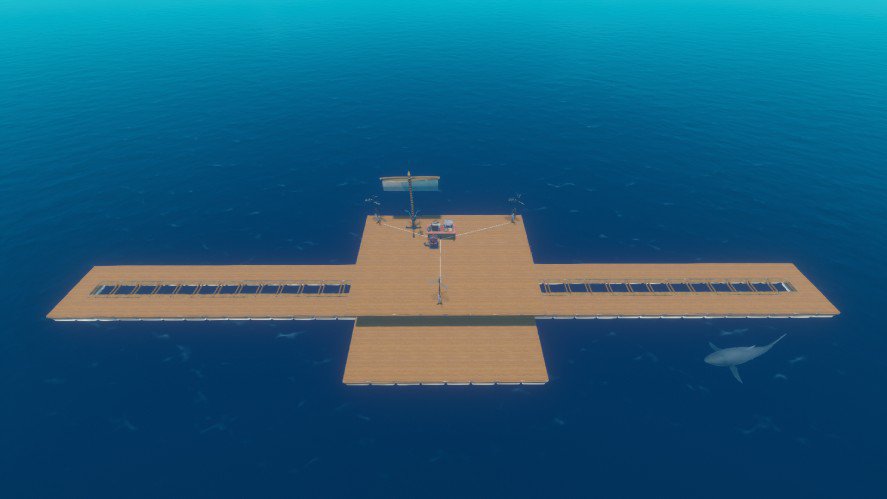
Only expand the center part when you really need to build more structures. Otherwise, keep it as small as possible to save resources for the upper floors.
Some structures like chests and crop plots can be hung on walls to save you even more space.
Once you have the Engine blueprint, you may need to expand the first floor again. But that shouldn’t be a big issue.
Your storage room should be in the center of your raft so you can quickly grab whatever you need.
The farming area should be placed near the Engines and cooking room, as you’ll need to constantly feed Engines raw potatoes and honey.
Use the second floor for the Receiver setup. Other machines and structures like Smelters and Recyclers can also temporarily be placed on the first floor.
By default, the upper floor can only be one Foundation bigger than the lower floor. So, you’ll often find it difficult only to expand the second floor while keeping the first floor the same.
This is quite normal, as that’s just how the game works. You can build everything on the first floor except for the Receiver and Antennas.
However, by using a trick in our other guide, you can make the second floor levitate and thereby expand it endlessly without expanding the first floor.
Applying the above method allows you to build a raft with an upside-down pyramid shape, saving a lot of resources while giving you plenty of space for building.
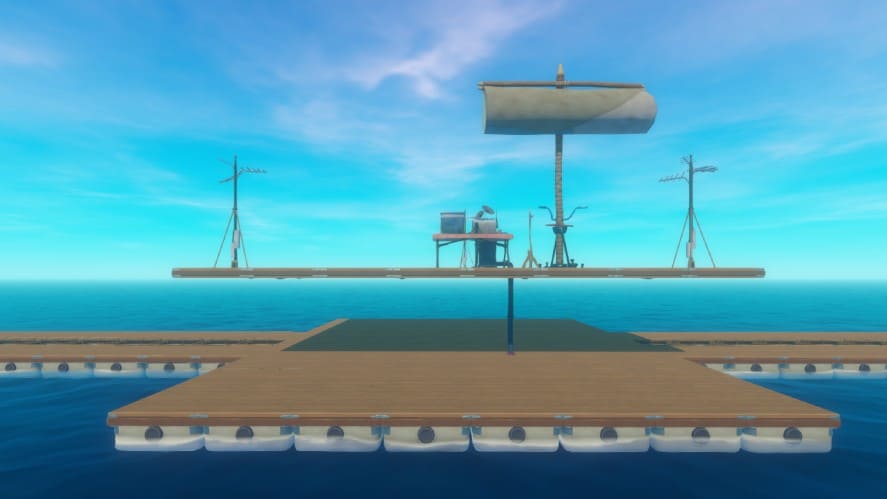
Pretty cool, right? Your raft may look weird, though.
That’s how to build your raft in Raft.
Have any suggestions for this guide? Let us know in the comment section below.

